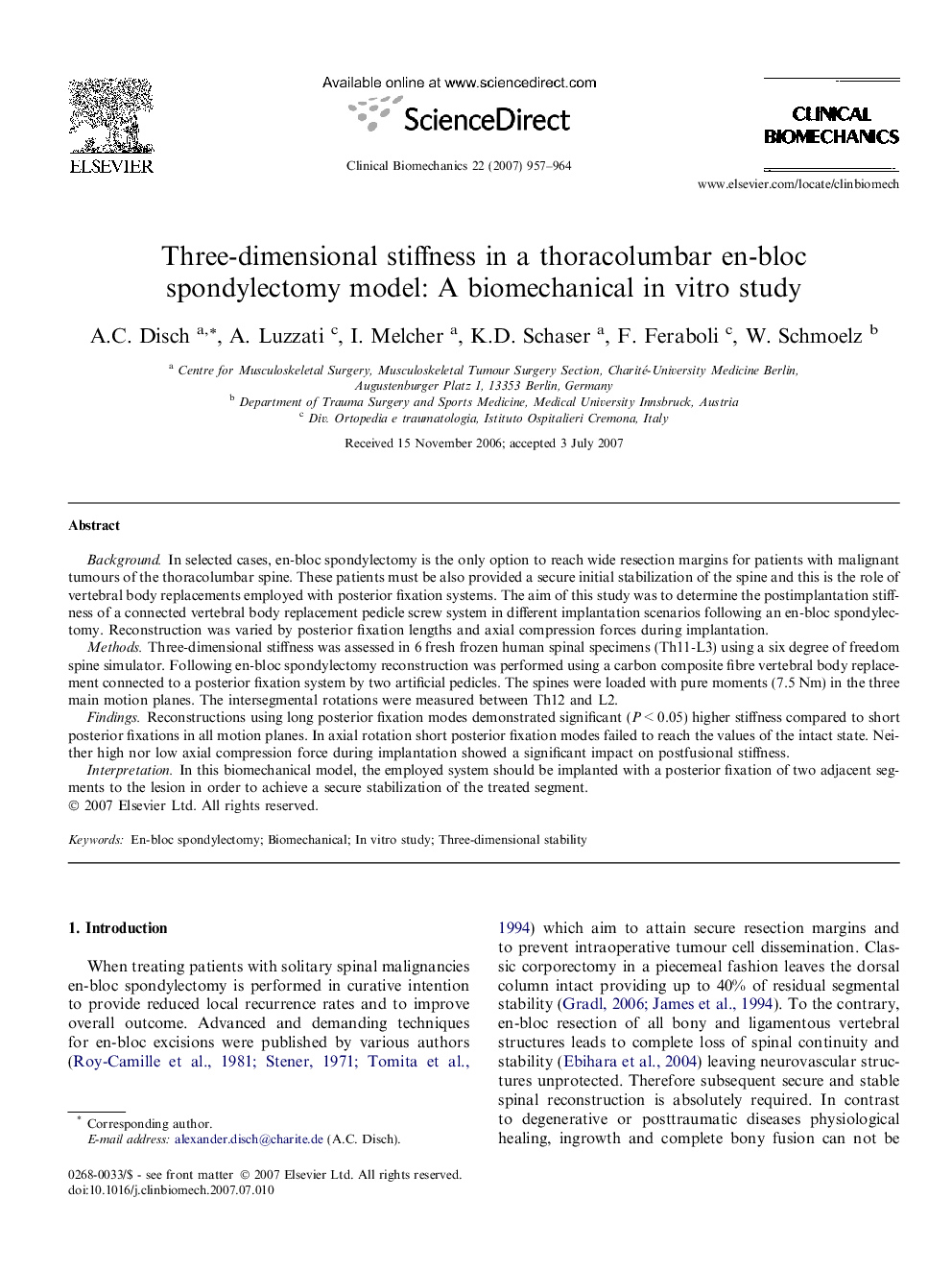| کد مقاله | کد نشریه | سال انتشار | مقاله انگلیسی | نسخه تمام متن |
|---|---|---|---|---|
| 4051215 | 1264981 | 2007 | 8 صفحه PDF | دانلود رایگان |

BackgroundIn selected cases, en-bloc spondylectomy is the only option to reach wide resection margins for patients with malignant tumours of the thoracolumbar spine. These patients must be also provided a secure initial stabilization of the spine and this is the role of vertebral body replacements employed with posterior fixation systems. The aim of this study was to determine the postimplantation stiffness of a connected vertebral body replacement pedicle screw system in different implantation scenarios following an en-bloc spondylectomy. Reconstruction was varied by posterior fixation lengths and axial compression forces during implantation.MethodsThree-dimensional stiffness was assessed in 6 fresh frozen human spinal specimens (Th11-L3) using a six degree of freedom spine simulator. Following en-bloc spondylectomy reconstruction was performed using a carbon composite fibre vertebral body replacement connected to a posterior fixation system by two artificial pedicles. The spines were loaded with pure moments (7.5 Nm) in the three main motion planes. The intersegmental rotations were measured between Th12 and L2.FindingsReconstructions using long posterior fixation modes demonstrated significant (P < 0.05) higher stiffness compared to short posterior fixations in all motion planes. In axial rotation short posterior fixation modes failed to reach the values of the intact state. Neither high nor low axial compression force during implantation showed a significant impact on postfusional stiffness.InterpretationIn this biomechanical model, the employed system should be implanted with a posterior fixation of two adjacent segments to the lesion in order to achieve a secure stabilization of the treated segment.
Journal: Clinical Biomechanics - Volume 22, Issue 9, November 2007, Pages 957–964